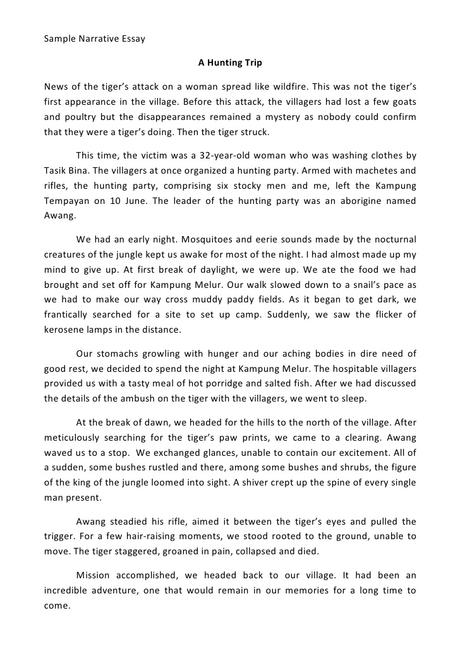Don t spend a lot of time telling how you feel or how you felt instead, show. That is, provide the sort of specific details that will invite your readers to respond directly to your experience. Finally, save enough time to proofread carefully. Don t let surface errors distract the reader and undermine your hard work.
Composition Patterns: Narrative and Descriptive
In structuring a narrative essay, it's the writer's choice when to reveal the significance of the experience. Some writers make this connection to theme in the opening paragraph. Others like to focus on the experience and reveal its significance at the end. Writers should experiment which way works best for the essay. Clueing in the reader upfront helps their understanding, but saving the revelation to the end can leave the reader with more to think about.
Compose a Narrative Essay or Personal Statement
If the author decides to write a narrative essay in a form of a story it is crucial to keep in mind the model of storytelling:
Narrative Essay 3-5 - Hart-Ransom Academic Charter
The challenge is to write an essay that is not only interesting (vivid, precise, well-constructed) but also intellectually and emotionally inviting.
8. Revising a Narrative Essay
In the revision phase, students review, modify, and reorganize their work with the goal of making it the best it can be. In revising a narrative essay, students should reread their work with these considerations in mind:
"Debel! Debel!" he said, pointing with disdain at a pug-nosed bust with an evil smirk standing amid a tangle of roots. The Devil.
Organizing. Most of your essay will probably be organized chronologically --that is, details will be reported moment by moment according to the order in which they occurred. In addition, make sure that you complement this narrative (at the beginning, at the end, and/or along the way) with interpretive commentary--your explanations of the meaning of the experience.
Up at a promontory above the river we found Olu Igbo 656 the lord of the forest. Placing his stick in his back pocket, the little man fell silent and bowed. It was indeed an awesome sight 656 a giant stone effigy standing among great trees, with huge eyes and long arms spread out like wings. Hoots and warbles percolated in from the foliage rain began to fall but its drops, intercepted by the manifold layers of leaves above, hardly touched us.
Read Mark Twain's little piece (below) about the troubles he has with his new watch, as another example of narrative writing. (There is very little in the way of paragraphing in this narrative, and as you read along you might want to think about how you would break this piece into smaller units of thought for your reader.) Answer the questions we pose after Twain's essay and apply them as well to Jeffrey Tayler's essay above.
When you write a narrative essay, you are telling a story. Narrative essays are told from a defined point of view, often the author's, so there is feeling as well as specific and often sensory details provided to get the reader involved in the elements and sequence of the story. The verbs are vivid and precise. The narrative essay makes a point and that point is often defined in the opening sentence, but can also be found as the last sentence in the opening paragraph.

"Narrative essay about a life experience" in pictures. More images "Narrative essay about a life experience".
